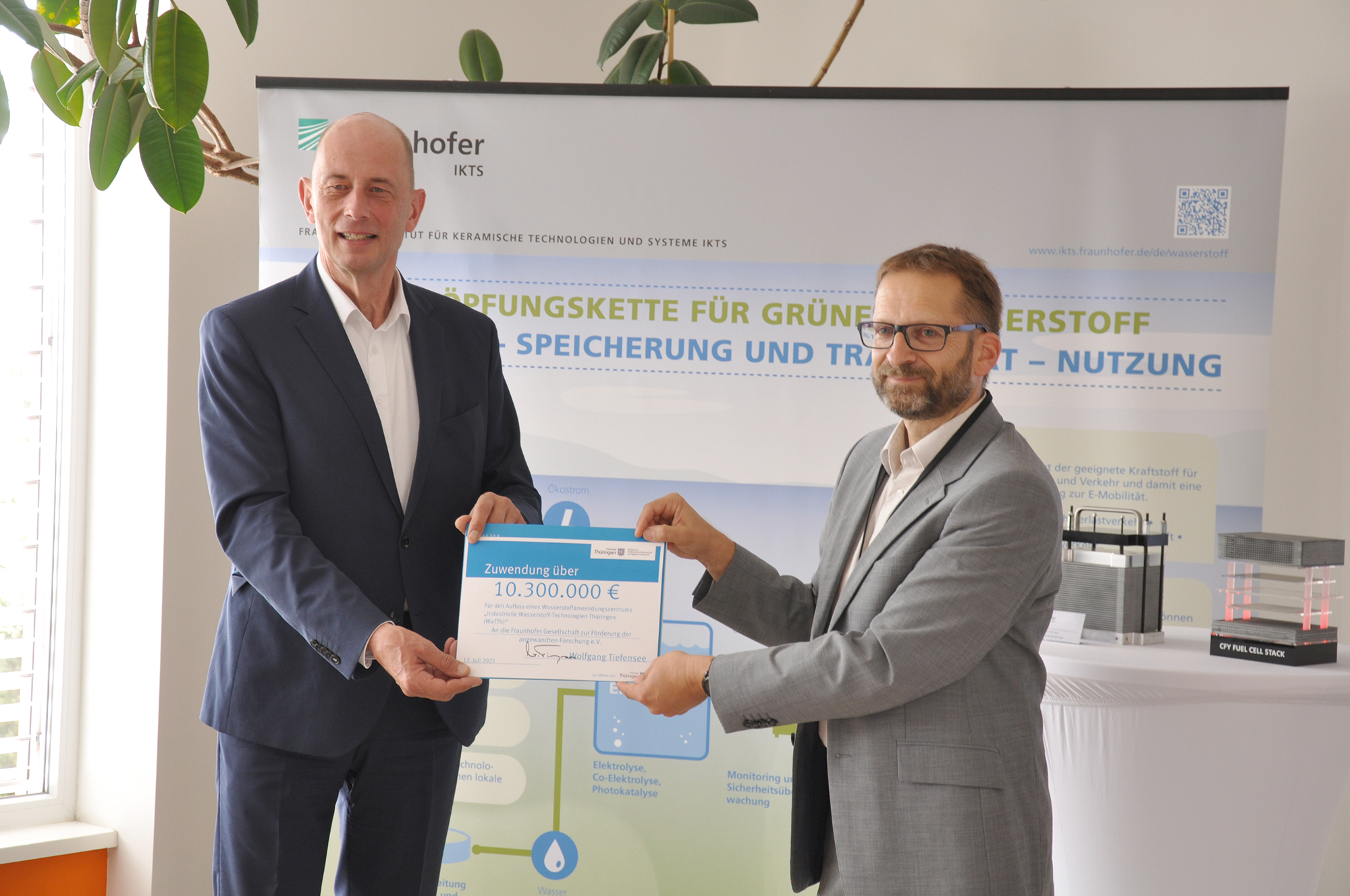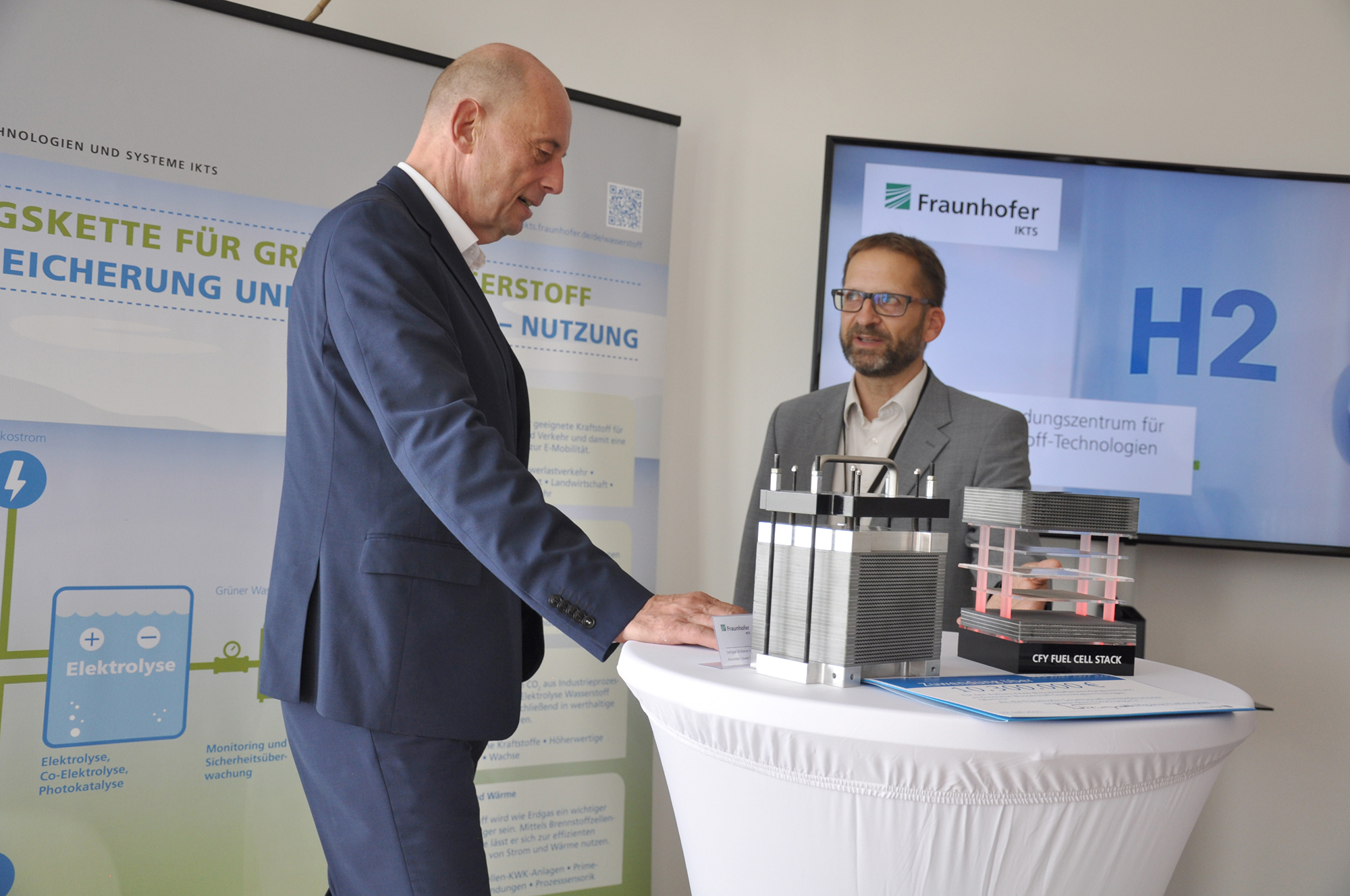Strong signal for H2 technologies in Thuringia
Future technology hydrogen with new application center in Thuringia’s Erfurter Kreuz
The use of hydrogen holds great potential for decarbonizing industry and thus makes an important contribution to protecting the climate. Innovative hydrogen technologies are the key to a promising and growing market. The state of Thuringia is therefore supporting the new hydrogen application center at the Erfurter Kreuz research campus “Industrial Hydrogen Technologies Thuringia (WaTTh)” with 6.9 million euros over three years. The state is providing a further 3.4 million euros for the purchase of a building in which Fraunhofer IKTS researchers can develop and test hydrogen technologies.


“With this project, we can raise the unique solutions for the production and use of hydrogen, which are being developed at the Fraunhofer Institute for Ceramic Technologies and Systems IKTS, to an industrial level. In addition, the local supplier industry in Thuringia will also be involved,” said Dr. Roland Weidl, site manager of IKTS in Arnstadt.
Thuringia's Minister of Economics Wolfgang Tiefensee sees this project as an investment in Thuringia's future: “Hydrogen is an important technological lever for CO2 neutrality in industry. With this strategic investment, Thuringia can bundle existing know-how, develop necessary innovations, and transfer them directly into production. In this way, Thuringia is sending out another important signal for forward-looking technologies.”
For this purpose, the Battery Innovation and Technology Center BITC as part of Fraunhofer IKTS at the Erfurter Kreuz will be expanded to include a “Hydrogen Application Center for Industrial Hydrogen Technologies Thuringia” (WaTTh). This step creates important synergy effects with the energy storage production technology 4.0 already under development at BITC. The focus is particularly on the areas of hydrogen production through large-scale stack technology and industrial use of hydrogen: for example, thermal use in the ceramics industry and special power-to-X solutions. To this end, there will be a close cooperation with the Technical University of Ilmenau as well as the Institute for Applied Building Materials Research Weimar gGmbH and the new HySON Institute in Sonneberg.
The purchase of a building and further space at the Erfurter Kreuz research campus, which is also being funded, will secure the necessary resources for further expansion and the long-term presence of Fraunhofer research on site.